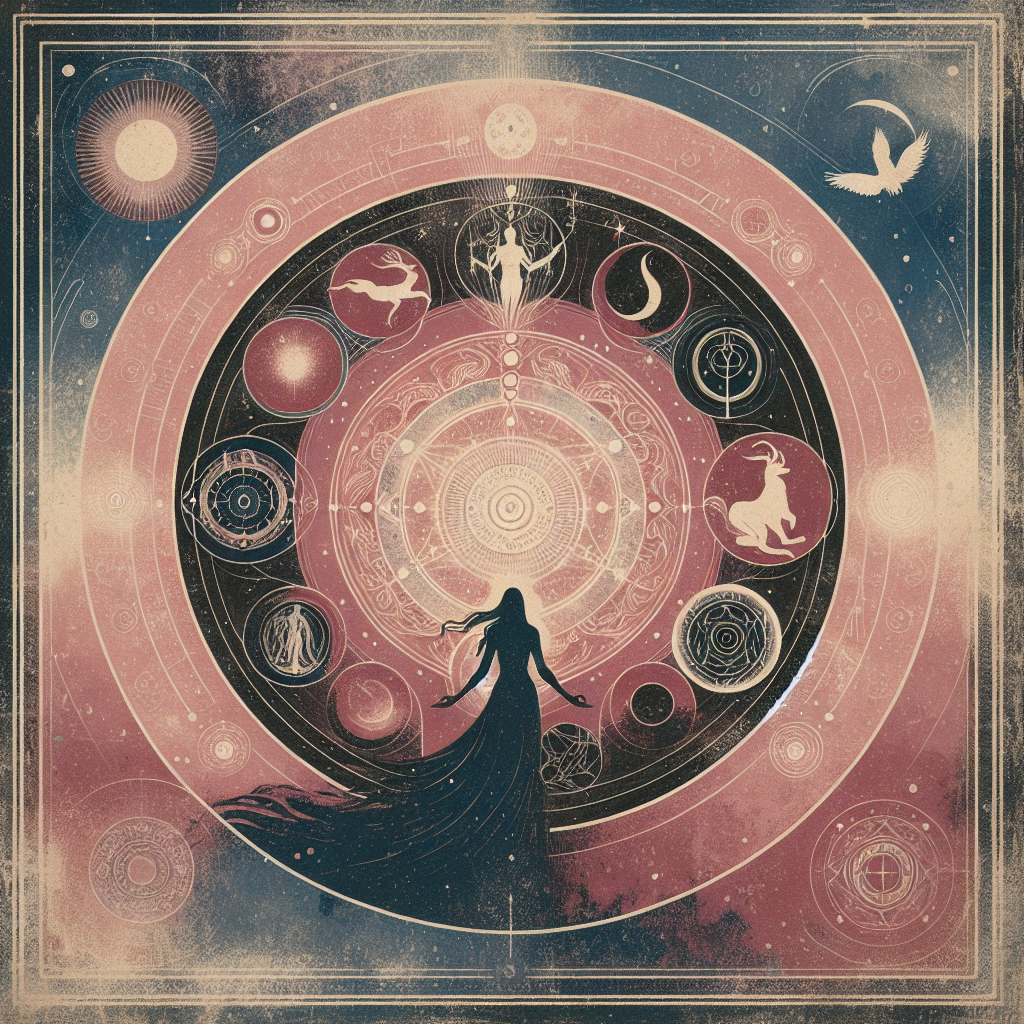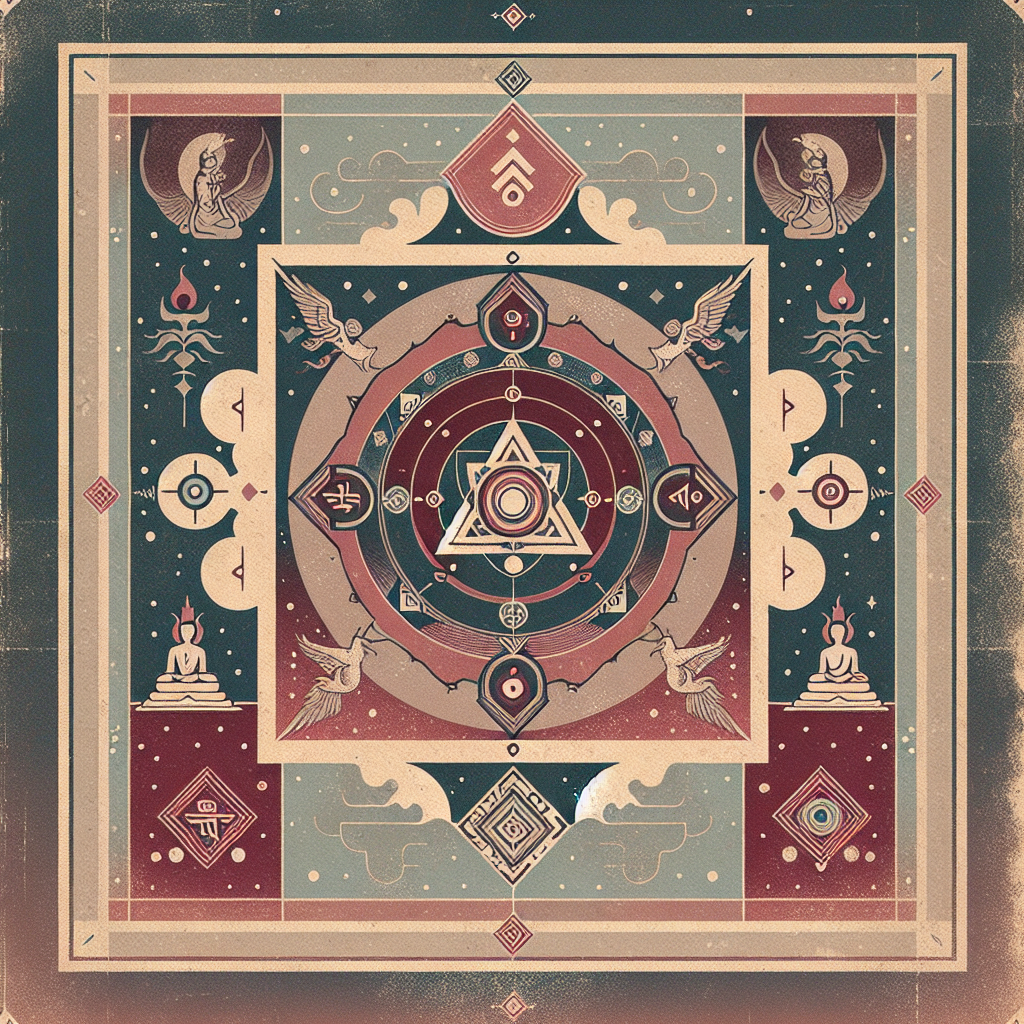
Bardo: Transitional States in Tibetan Buddhism
Introduction
Bardo (Tibetan: bar do, བར་དོ་; Sanskrit: antarābhava, अन्तराभव; Chinese: 中陰, zhōngyīn) refers to an “in‑between” or transitional state. In Tibetan Buddhist usage, it most often denotes the postmortem interval between death and a new birth, though traditional lists describe six bardos that also include experiences in life:
- the bardo of ordinary waking
- the bardo of dreaming
- the bardo of meditation
- the bardo of dying
- the bardo of reality
- the bardo of becoming
The Tibetan understanding draws on earlier Indian Buddhist discussions of an intermediate existence (antarābhava), which some scholastic schools accepted and others rejected. Tibetan Buddhism, by contrast, made the doctrine mainstream and developed detailed ritual and textual guidance for it.
The most famous guide is the Bardo Thödol (Bar do thos grol, often called “The Tibetan Book of the Dead”), a cycle of revelatory texts used to orient the dying and the recently deceased. Tradition attributes the cycle to the 8th‑century master Padmasambhava. Critical scholarship, however, links its compilation and dissemination to the 14th‑century treasure revealer Karma Lingpa and later redactions, and notes how the work’s modern reception was shaped by 20th‑century translators and interpreters. [1][2][3][4]
What These Realms Are Like
Tibetan sources describe the postmortem bardos as structured phases through which consciousness disjoins from the body and seeks a new rebirth. A common presentation outlines three successive intervals within the overall postmortem period, often said to last up to forty‑nine days. These are treated as both states of being and experiential processes: [1][2]
- Bardo of the moment of death (’chi kha’i bar do). The elements dissolve and the “clear light” appears—an opening to recognize the mind’s luminous nature.
- Bardo of reality or dharmatā (chos nyid kyi bar do). Visionary experiences arise, frequently described as appearances of peaceful and wrathful deities. Instructions counsel recognizing these as displays of one’s own mind rather than external threats.
- Bardo of becoming (srid pa’i bar do). Karmic momentum re‑forms and there is a search for an appropriate womb, culminating in rebirth.
The Bardo Thödol is recited to the dying and newly deceased to prompt recognition and reduce fear, with the aim of liberation—or, if that is not achieved, a favorable rebirth. While the “forty‑nine days” framework is widely cited in ritual practice and summaries, Tibetan scholastic sources treat it as a maximum rather than a fixed duration. Experiences are said to vary according to karma and prior training. In this way, what unfolds can feel like both a mirror and a path—an intimate space where awareness has a chance to awaken. [1][2]
How People Say They Get There
The most straightforward way one “enters” the bardo is by dying. Tibetan ritual manuals and funerary customs prepare for this transition well before death, at the deathbed, and in the weeks after. Lamas or trained ritual specialists commonly read or chant instructions from the Bardo Thödol and related rites near the dying person’s ear and during the postmortem period, describing the dissolutions, appearances, and choices the consciousness is said to encounter. The text’s title—“Great Liberation through Hearing in the Intermediate State”—captures the premise that auditory guidance can catalyze recognition in a liminal condition still responsive to instruction. [1][2]
Tibetan frameworks also label states within life as bardos. Dreaming (rmi lam bar do) and meditative absorption (bsam gtan bar do) are treated as rehearsals for dying: training to recognize the luminous nature of experience in these states prepares one for similar recognitions at death. Some ritual cycles add practices to stabilize attention, purify karmic traces, and direct consciousness toward liberation or a higher rebirth. In modern contexts, the Bardo Thödol has influenced Western end‑of‑life culture and hospice literature, but its use there is interpretive and devotional; robust clinical evidence for therapeutic efficacy is lacking, and its standing remains religious‑philosophical rather than medical. [1][2][3][4]

Who & What Lives There
Accounts of the bardo populate it with figures and forces that reflect one’s mental and moral continuum. The most prominent are arrays of peaceful and wrathful deities (often explained as yidam forms and their fierce manifestations). Tibetan authors emphasize that these are not “others” in a strict sense, but expressive displays of mind’s nature, encountered as visionary presences by those unaccustomed to recognizing them. [1][2][3]
Apparitions can be comforting or terrifying. Gentle luminosities and buddha‑forms may arise first, followed by tumultuous sounds, lights, and wrathful forms. Instructions warn that fear and aversion amplify confusion, whereas calm recognition allows these appearances to self‑liberate. In later stages, evaluative experiences—sometimes rendered in popular idiom as judgment scenes presided over by a Lord of Death—symbolize the weighing of karmic imprints that condition the next birth. The deceased is depicted as propelled by habitual tendencies toward a matching realm and family lineage. Descriptions differ across texts and schools, but the shared aim is to reframe the bardo as an arena where practice can bear decisive fruit—where awareness, steadied by compassion, can transform the journey.
Different Cultural Views
The idea of an intermediate state has a complex Buddhist history. Indian scholastic debates turned on whether rebirth requires an interval. The Sarvāstivāda school, among others, argued for an antarābhava populated by “intermediate beings,” while Theravāda Abhidhamma largely rejected such an interval, positing instead an immediate relinking consciousness at conception. [1]
Tibetan traditions, working from Indian sources that supported an intermediate existence, elaborated the bardo into a comprehensive map of death, vision, and rebirth and integrated it deeply into ritual life. East Asian Buddhism also received intermediate‑state concepts (Chinese: zhōngyīn), and forty‑nine‑day memorial observances became standard in many regions. Tibetan materials likewise speak of up to forty‑nine days, though not as a rigid universal rule. [1][2]
In the modern West, the Bardo Thödol became famous through the 1927 English edition crafted by W. Y. Evans‑Wentz, who framed the work with Theosophical and comparative‑religion lenses. Scholars have shown how this edition’s title, interpretive apparatus, and marketing profoundly shaped non‑Tibetan perceptions, sometimes obscuring the text’s ritual context and Tibetan reception history. Subsequent critical studies have re‑situated the work within treasure‑revelation lineages (terma), traced its 14th‑century consolidation, and mapped its transmission and adaptation within Tibet across regions and centuries. These studies also caution against reading the bardo exclusively as psychology or exclusively as literal geography; Tibetan sources treat it as a transitional mode in which experience and liberation intersect. [1][2][3][4]
Sources
-
Robert E. Buswell Jr. and Donald S. Lopez Jr., The Princeton Dictionary of Buddhism, 2013. Authoritative definitions of bardo/antarābhava, six bardos, and intermediate‑state debates across Buddhist traditions. https://press.princeton.edu/books/hardcover/9780691157863/the-princeton-dictionary-of-buddhism
-
Encyclopaedia Britannica, “Bardo Thödol (Tibetan Book of the Dead),” 2024. Concise overview of postmortem bardos, forty‑nine‑day framework, ritual recitation, and dating of the text. https://www.britannica.com/topic/Bardo-Thodol
-
Donald S. Lopez Jr., The Tibetan Book of the Dead: A Biography, 2011. Critical study of the text’s modern reception, Evans‑Wentz’s role, and Western reinterpretations; situates the work beyond devotional readings. https://press.princeton.edu/books/ebook/9781400838042/the-tibetan-book-of-the-dead-0
-
Bryan J. Cuevas, The Hidden History of The Tibetan Book of the Dead, 2003. Oxford University Press monograph tracing the 14th‑century revelation, transmission histories, and Tibetan ritual contexts. https://academic.oup.com/book/50280/chapter-abstract/422706619?redirectedFrom=fulltext